Making ricotta cheese at home is easy to do anytime, but it’s especially frugal when you can salvage milk that’s nearing its ‘use by’ date. It will take about an hour, start to finish, to make a batch.
Got milk? Be sure to try making homemade yogurt, too!
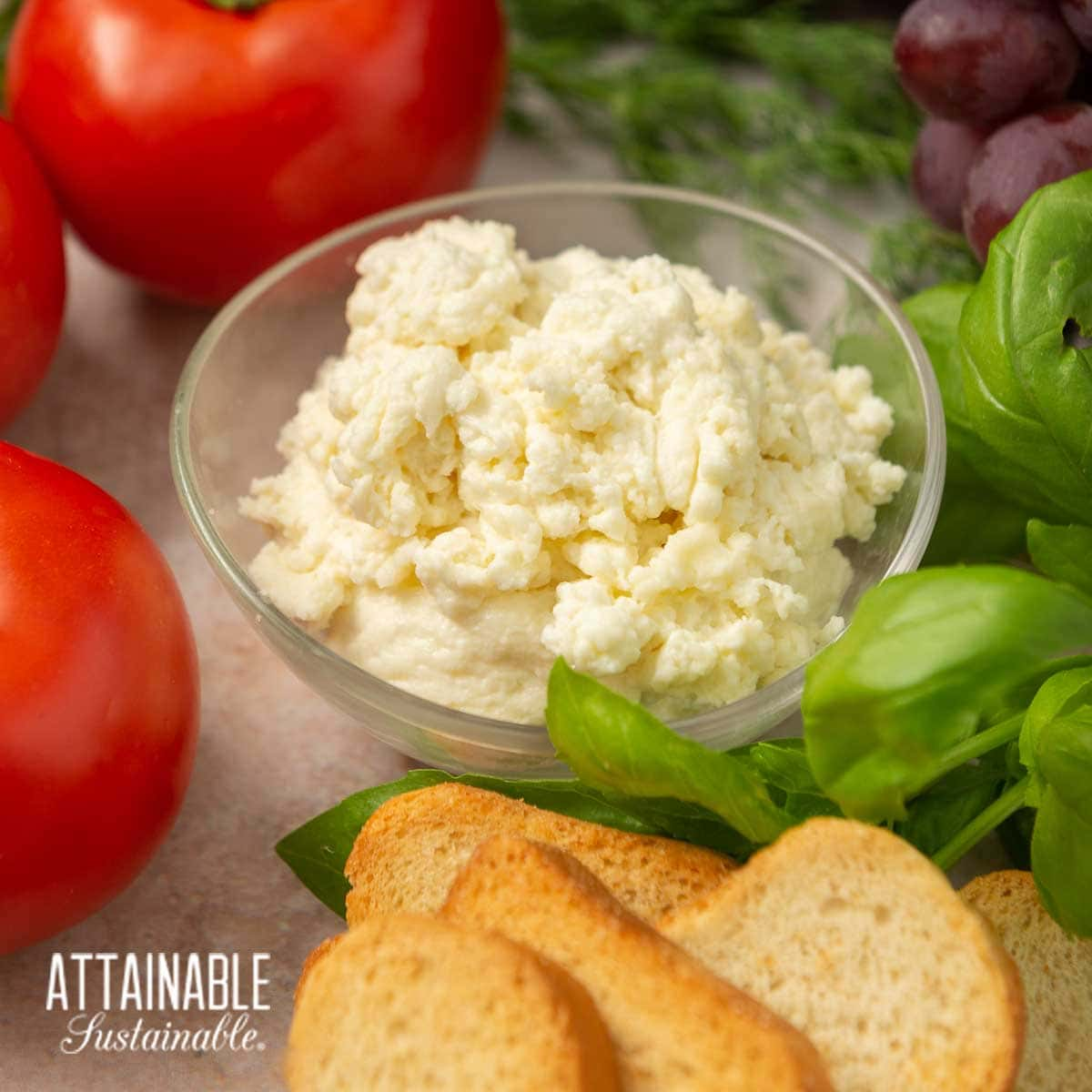
Normally we go through the milk we have on hand with no problem, but occasionally it starts to sour before we can use it. This week I found myself with milk just starting to turn and I didn’t want it to go to waste.
How to make ricotta cheese
This is one of those recipes that’s incredibly simple once we get beyond the idea of buying it at the store. But making it at home allows us to cut out the plastic container that comes with store bought ricotta. This easy ricotta cheese recipe costs less than store bought, too. (I don’t know about where you live, but it’s crazy expensive here!) And making it at home can — as in this case — help you salvage milk that might be on its way out. That’s a lot of winning!
First, though, let’s talk about yield. This recipe calls for a half gallon of milk. You will not end up with a half gallon of cheese! In the process of making this recipe, the fat in the milk will be transformed into the curds that become cheese. The rest will become whey.
You will have more whey than cheese. Expect to get anywhere from one to two cups of cheese from this recipe. This will depend on the fat and casein content in the milk itself.
5 Easy Steps to Transform Your Pantry!
Ready to switch from store bought to homemade? Let me help you make some changes! Grab my FREE five-part guide to getting started.
The Handcrafted Pantry
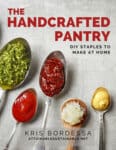
Ready to DIY your pantry with more wholesome ingredients? Check out my ebook, The Handcrafted Pantry! Filled with delicious recipes for some of your favorite condiments, snacks, and toppings, it’s the guide you need to start skipping packaged products and embrace homemade.
Ingredients
Milk — You’ll need to use whole milk for this ricotta cheese recipe — it’s the fat in the milk that transform into the curds that make cheese. Choose milk that has not been ultra-pasteurized if possible. Better yet, use raw milk.
Acid — The addition of acid is what curdles the milk, transforming the fats into solids. You can use either lemon juice or vinegar. (I opt for apple cider vinegar.)
Salt — Use your favorite table salt or sea salt.
 Process
Process
Basically, you’ll heat the milk with the salt until it simmers. Adding lemon juice to the heated milk will cause it to curdle. (It’s actually kind of fascinating!) Allow the curdled milk to sit untouched for ten minutes or so, then strain it through cheesecloth. The thickened curds will remain while the whey strains out.
It took me about half an hour to get to the straining point, but much of this was just spent waiting for the milk to warm. I think the biggest hurdle for most people would be that they don’t have cheesecloth on hand. I happened to have some, but I really think this could work in a fine sieve, too.
Honestly, I’m surprised that I’ve made it this far in life without knowing that making ricotta cheese at home is so easy. The texture of homemade ricotta can be firm or loose, depending on how long you allow it to drain.
To make a looser, creamier batch, just adjust the drain time, allowing some of the moisture in the cheese to remain. For a firm ricotta cheese allow to drain longer and squeeze the ball of cheese before removing from the cheesecloth.
And now, about that leftover whey
You can use the leftover whey — liquid that remains after straining — in place of the liquid in just about any recipe that calls for milk (think: muffins, pancakes, bread).
I used mine to make several batches of foccacia bread, and still have a bit more in the refrigerator. I’ve also heard of it being used to replace water for cooking rice and in place of milk in an au gratin potato recipe. You can also use it to jump-start a batch of homemade sauerkraut.
Can you freeze ricotta cheese?
Yes, but. You absolutely can freeze ricotta cheese. This is a great way to keep it, whether you make your own or find a killer sale on your favorite brand. But. The texture of the ricotta cheese will be slightly altered by freezing.
If you’re using the ricotta in a lasagna recipe or as an ingredient, you likely won’t even notice. If you were to eat it plain, you might.
30+ DIY Condiments to Make at Home
This homemade ricotta cheese is just one great pantry staple you can make yourself! Why not try your hand at making more?
Making sour cream at home requires just two ingredients — and a little bit of patience. It’s great to make in a pinch to avoid a trip to the store, and DIYing can really cut down on the number of plastic tubs you bring home. Get the recipe here.
You might be surprised to discover just how easy it is to make mustard at home! Another two ingredient recipe, this one has many variations to suit your taste buds. Get the recipe here.
Whip up a batch of homemade mayonnaise with pantry ingredients! This recipe results in a flavor similar to our favorite jarred mayo and can be ready in just a minute. Get the recipe here.
See the entire collection of homemade condiment recipes you can make at home here!
★ Did you make this ricotta cheese recipe? Don’t forget to give it a star rating below!

Homemade Ricotta Cheese
Ingredients
- ½ gallon whole milk (I used raw milk but whole pasteurized milk will be fine)
- 1 teaspoon sea salt
- 2 tablespoons lemon juice or apple cider vinegar
Instructions
- Mix milk and salt in a pot. Cook over medium high heat, stirring every few minutes, until the milk reaches 185 degrees. (If you don’t have a candy thermometer, bring the milk to a simmer but do not let it boil.)1/2 gallon whole milk, 1 teaspoon sea salt
- Stir in the lemon juice or apple cider vinegar, turn the heat down to medium, and let sit for one minute. As soon as you stir in the lemon juice, you may see the milk start to curdle and separate into curds and whey.2 tablespoons lemon juice
- Gently stir again and turn off the heat. Let sit without stirring (it’s hard not to keep checking it!) for ten minutes.
- While the pot sits, line a colander with several layers of cheesecloth. Place the colander in a bowl to catch the whey.
- Pour the contents of the pot into the colander. Pull opposite corners of the cheesecloth together and tie a knot. Repeat with the other corners, then hang this little bag-o-cheese on the handle of a wooden spoon suspended over the dirty pot to catch any drips. Allow to drain for a couple of hours, then transfer your homemade ricotta cheese to a glass container and refrigerate.
Notes
- I used raw milk but whole pasteurized milk will be fine. Just try to find milk that hasn't been *ultra-pasteurized.
- Alternatively, you can use a jelly bag to drain the cheese.
 Process
Process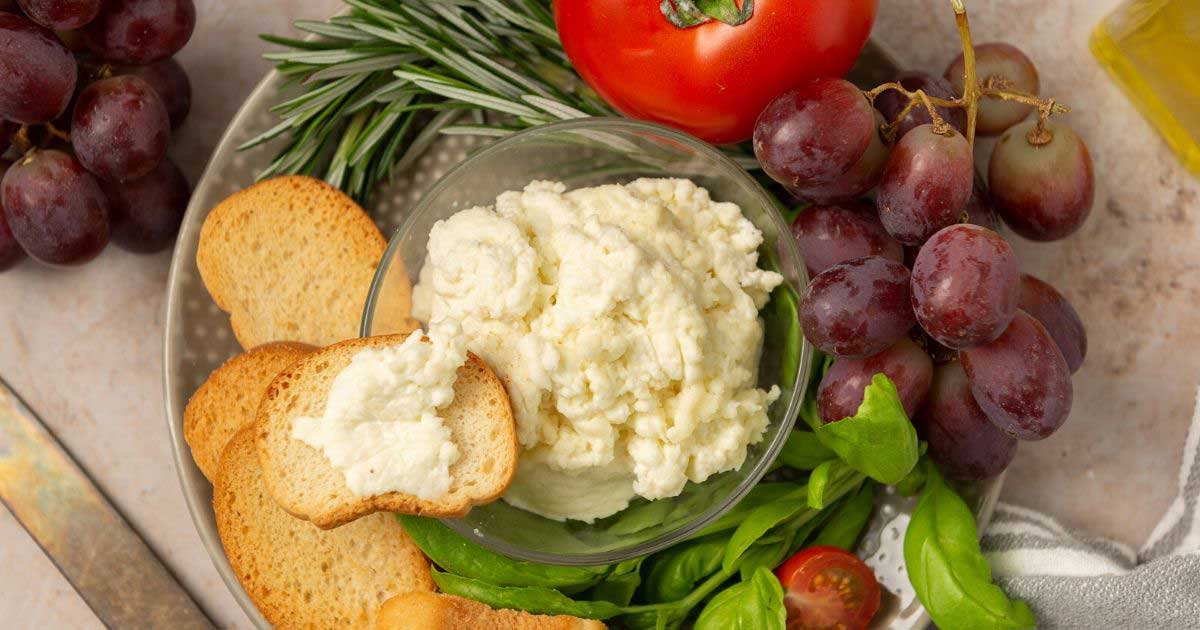
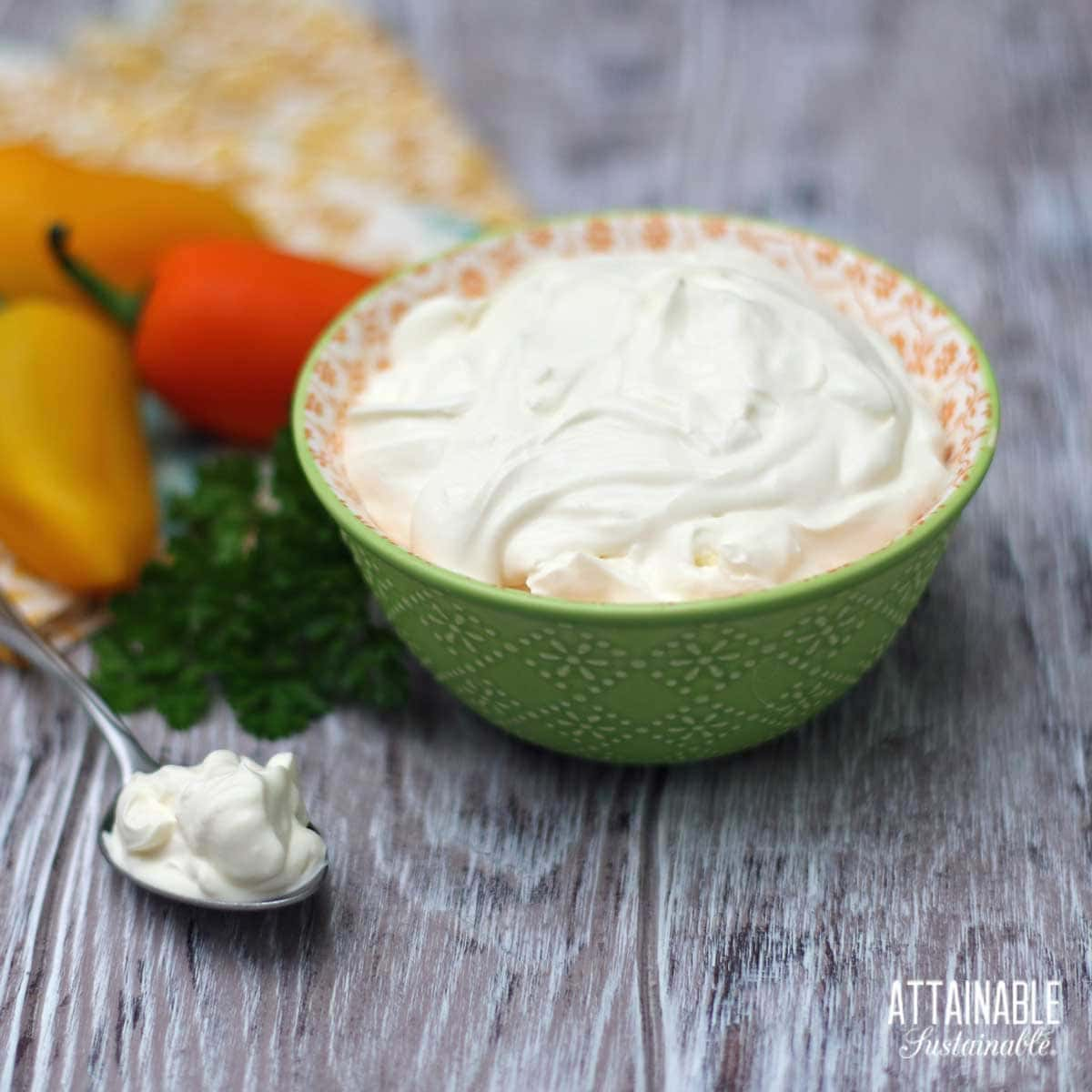
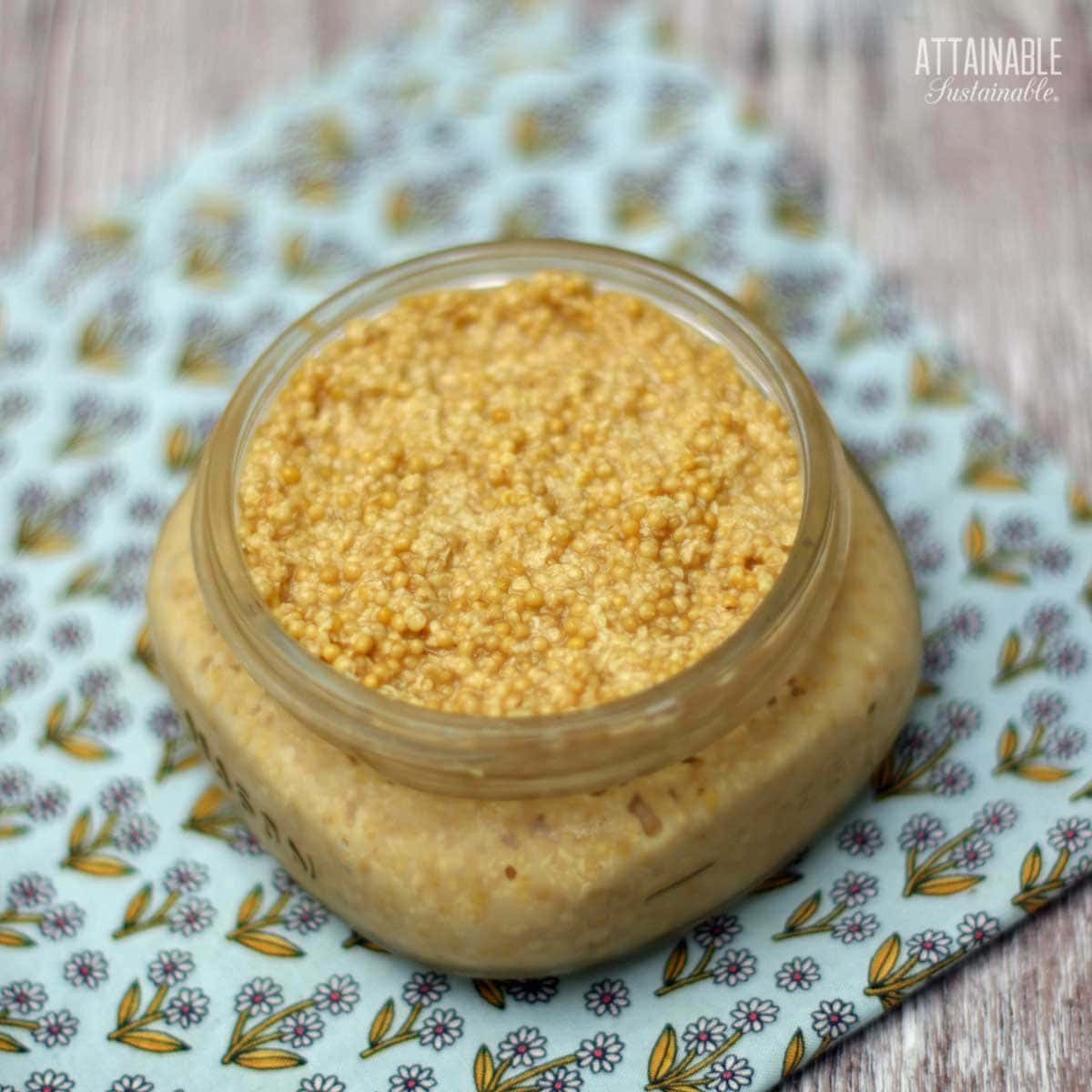
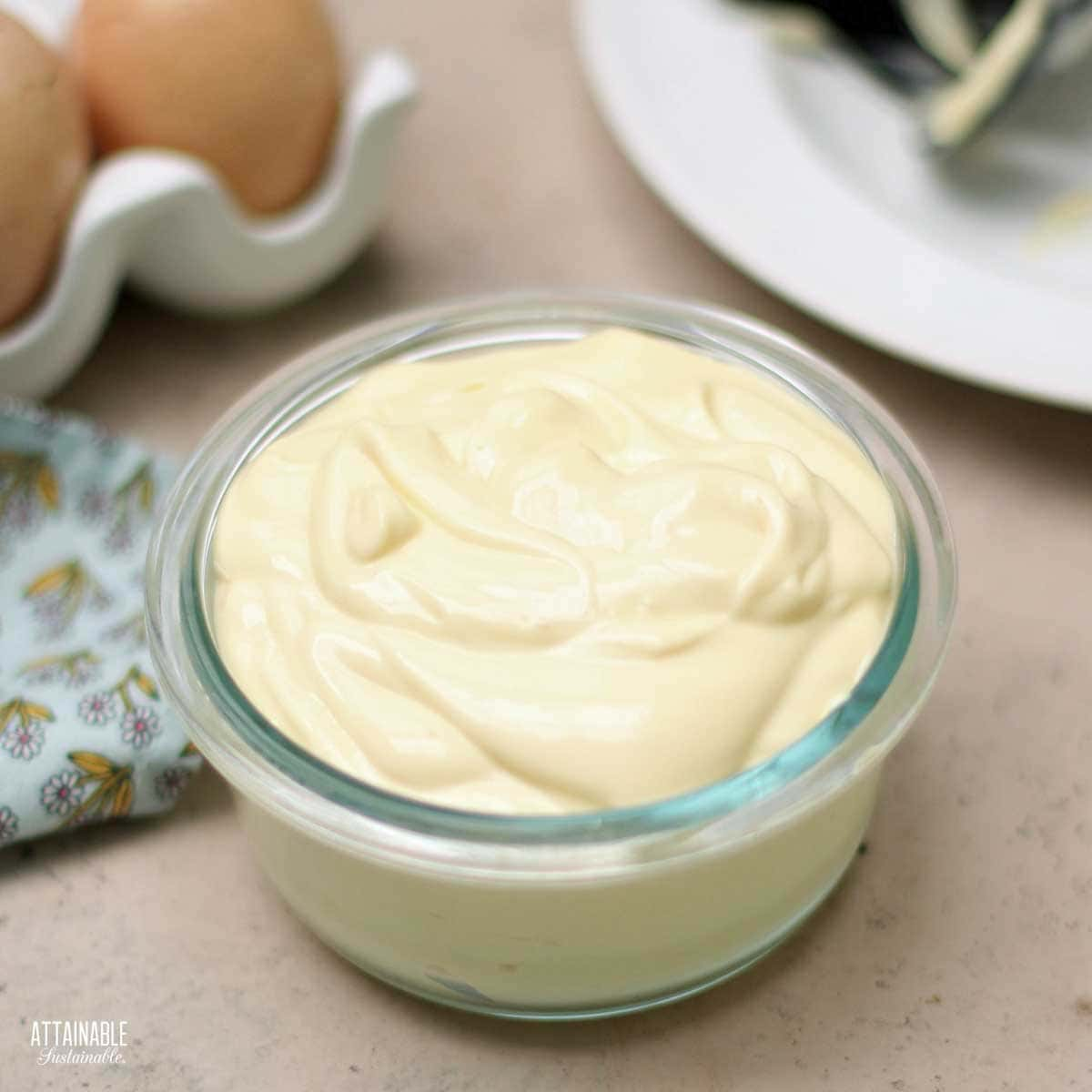
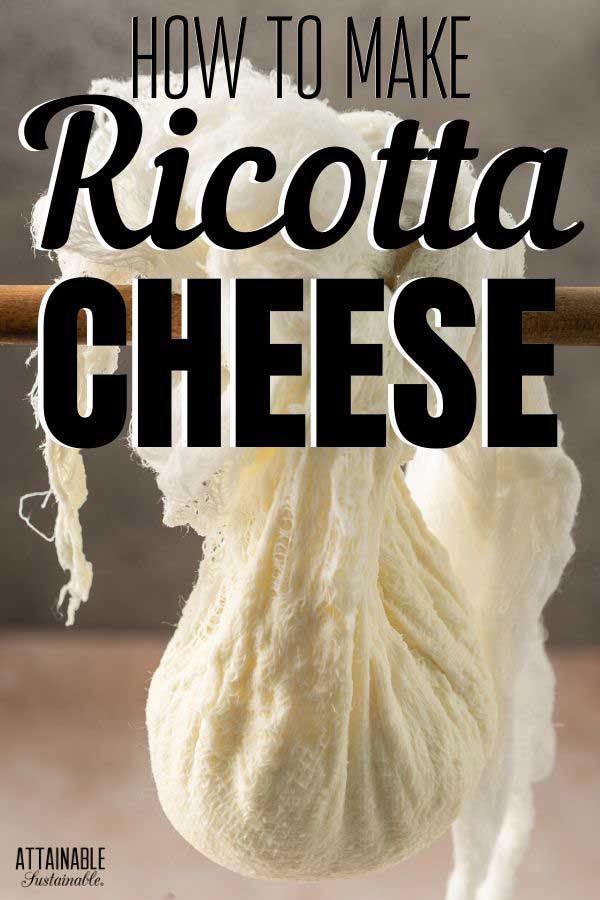

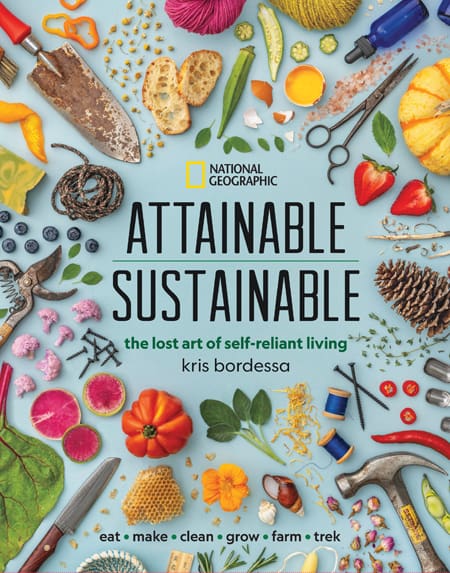
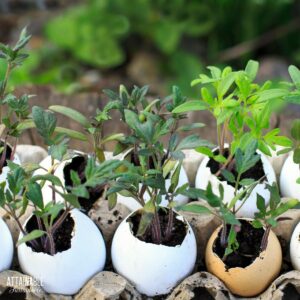
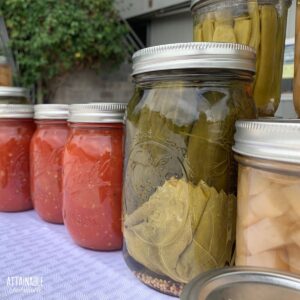
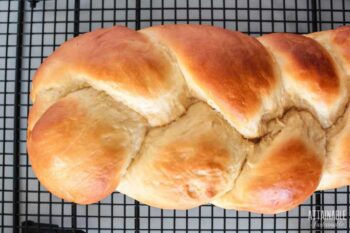
I just finished making this with A2A2 raw milk; it was very easy and tastes great.
My only question is, why does my whey still look so white? Usually the whey is more yellow, but I’ve used store bought whole milk making cheese previously.
I don’t know!
I have two children that are lactose intolerant so I make it with lactose free milk. Turns out great every time.
Glad you like it!
First time making any type of cheese. After searching for hours I worked up enough courage to give it a go.
The first go around I yielded about 1/4 of a cup and remaining “whey” still looked extremely milky.
Not to be one to waste I poured all the liquid back into the pot and started at step 1.
Things went much better the second time around and yielded the recommended amount plus I had the additional from the first go around.
I determined that the sea salt was not as finely ground the first time and during the 1 minute period I turned the stove eye off not down the first go around.
Over all pleased and thankful there wasn’t a huge waste. Will be trying this again.
I’m glad it worked out for you 🙂
Just tried making ricotta – whole milk, sea salt and I used lemon juice. This is the first time I’ve ever had it not make curds. I make it all the time so I’m starting to think something is messed up in the milk. Wouldn’t surprise me with all the garbage they put in foods! All I got this time was some thick foamy stuff.
Darn! Better luck next time.
Followed recipe to the T… don’t know what went wrong. Used whole goat
milk and ACV. Never got a single curd. I used my candy thermometer and followed instructions. Read all the comments and added 2 T of white distilled vinegar, still no curds. That was an expensive fail.
The recipe doesn’t call for goat milk – goat’s milk doesn’t separate like cow milk, so I imagine that’s a good part of the problem. https://meyenberg.com/the-benefits
When you change the ingredients to a recipe, not surprisingly, the results at times are different. I make ricotta all the time and know this technique works resulting in delicious ricotta.
I grew up on a dairy. My mother learned to make ricotta from an old Sicilian woman. Your recipe is similar to hers, but yours offers some great tips and observations that I would not have thought to mention to non-cheese makers. Bravo! Thank you for the wonderful recipe and results. I made mine with whole raw milk and just a tablespoon of lemon juice from our lemon tree. It came out perfect.
Thanks for sharing, that’s awesome!
You can use the same whey again for a softer cheese right?
I haven’t done that but sounds like it would be ok. Try it!
Use the whey diluted for your houseplants!! Mine love it!!
I have a lot of 1% milk & some 1/2 & half. Can I make ricotta out of that?
I’m not sure how that would turn out, to be honest!
That’s what I just did. Not quite done, but curds and whey are visible at the start of the 10 minute resting period.
I just made my 10000000 batch…ok a little dramatic..but anyway
My yield was smaller than normal here.
I am in a higher elevation area….will that effect it or is it just the luck of the draw?
I have never heard of elevation affecting cheese yield, so I’m guessing it’s the luck of the draw. Try it again, maybe you’ll get more next time!
This is a great recipe. I made one similar 4 yrs back. It yielded over 2.5 cups of Ricotta. Yesterday I made this and it yielded 3/4 cup. So, then I realized that the vinegar helps yield more cheese. We make our own noodles now, kalamata bread and bolognese. As great as that sounds, I don’t know if my husband will ever take me out for Italian ever again. As empty nesters I thought I would be wined and dined again….but, now I am doing the whining and dining.
Well, those noodles sound delicious! You could double the cheese recipe next time if necessary, I hope you both enjoyed it.
Whining and dining, best comment ever!!
My husband won’t take me out for Italian either. This is where being a decent cook has totally bit me in the rear. Just know you are not alone.
Can you use half-and-half or whole cream instead of whole milk when making ricotta? Half and half and whole cream have way more fat than regular whole milk, would that help the quantity of regatta you get also? I am definitely going to try your recipe but really interested to know if we could use half-and-half instead of whole milk. Thank you and God bless from Las Vegas
I think you could, and that you might be right in that it could net a bit more cheese. If you try it, let us know how it goes!
I add a cup of cream to the milk and the ricotta comes out really creamy
I’ve never made ricotta before. I only had 2 quarts of whole milk, but adjusted the lemon juice and salt as needed. When I started, it had my full attention. But, midway through heating the milk (and I had forgotten, already, to add the salt), I got a distracting call. So, I looked up and the milk was reaching the top of the pot, and the candy thermometer read 200F. I thought I’d ruined it! Added the salt, removed anything that looked weird, waited for it to come down to 185 then put the heat on super low, and added 2 tbsp lemon juice. Turned off the heat, it still wasn’t really separating enough. Added 1 more tbsp and it was all good! No overly lemony taste and excellent texture. It’s quite delicious!! And, apparently, quite forgiving. 😉
This might be a silly question, but can you use evaporated milk instead of whole milk?
I’ve never tried it, but it seems like maybe not?
I just made this and I used the vinegar and it gave me way more cheese the when I tried with lemon juice. Can’t wait to dig into it
Glad that worked well for you, enjoy!
Does this work best with week-old raw milk? I just tried it and followed the recipe to the T, using fresh raw milk, and it thickened a bit, but didn’t make curds at all. Also, I used fresh squeezed lemon juice. I had 2 quarts of milk, so used 2/3 tsp of sea salt and 2 tablespoons of lemon juice. Any ideas?
It *could be the fresh lemon juice? Perhaps not as acidic as bottled? Fresh milk should work fine, BEST if it’s not ultra-pasteurized, as that can inhibit the process.
Use vinegar instead! Mine didn’t work either but I just re-tried with the same warm milk and added 1/3c vinegar and it curdled almost instantly
I only had a quart of milk, I adjusted recipe accordingly , but it only produced 1/3 cup of cheese. What could have gone wrong.
Did you use whole milk? The amount of resulting cheese depends on the fat content. Was the milk ultra-pasteurized?
This is what we call cottage cheese in India. But without the salt.
Thank you for your recipe.
Interesting — our cottage cheese has a consistency more like a chunky yogurt!
What do you do with the whey that’s left over. You said not to throw it out.
You can stir it into pancakes, waffles, biscuits, etc. Or use it to jumpstart a ferment.
You can also make fresh mozzarella at home too. I’ve been doing it every few weeks for about a year. I think I average a little over a pound from a gallon of whole milk. We love Caprese salad so we go through the cheese! Mozzarella uses powdered citric acid and liquid rennent. The temperatures are quite a bit lower as well.
Had no whole milk, therefore used 2% that was going south. Thanks for previously stating it should work. It did but had to use 3times the lemon juice. When it didn’t curdle with the original 3 tbsp I decided was going to have to dump anyway so added another 3. It began to curdle a bit so threw in additional 3. Magic number. I then let it sit again for 10 minutes and a bit longer till curdles were like your pics. It’s draining now. Didn’t quite make 3 cups but close. The whey tastes wonderfully lemony. Will be great in sourdough biscuits. Thanks for the inspiration. And it does not taste like cottage cheese but definitely like ricotta even if not made the Italian way.
Since you are using raw milk, if it sours it isn’t spoiled like store milk. You can use it like buttermilk in pancakes, biscuits, and other baked goods. You could also freeze some when it is fresh to help it last longer. HTH
Kris, sorry to state this again, as some-one did several years ago, this is NOT Ricotta, but a version of Cottage Cheese. Ricotta is only made from whey, which is taken from other cheeses. I have seen it made from Mozzarella whey, but could also probably be made from Cheddar or most other wheys.
I made a big boo-boo making my yogurt last night. I guess I let it cool off too much before I added the yogurt starter, let it run the 8 hours so it would become yogurt and needless to say it did not produce yogurt. It separated so I had clabbered milk and whey. I found this website and so I decided to try my hand at making cheese. It turned out great, it has a very slight yogurt taste which I like but it is definitely cheese. Smooth and creamy, don’t think it will harden up enough to slice. So if you goof up making your yogurt turn it into cheese. Yum yum.
Good save!
An easy to make alternative to store bought ricotta. Great recipe!
I have 2% milk that needs to be used up. Do you think this would work? And how long does ricotta last once made? Does it have same shelf life as the milk?
It won’t be quite as creamy, but yes, it should work. Once it’s turned into cheese, it should last longer than milk would. Just wrap it well. (We always gobble ours up before it goes bad!)
I don’t have 3 quarts of milk and I am trying to make a reduced amount (4 cups). It doesn’t look to make very much churd. Going to leave it to separate longer.
Can you use lactose free milk?
I can’t imagine why it wouldn’t, but I’ve never tried it.
You can also use white vinegar/apple cider instead of citrus and a fine strainer, after straining it well and lightly pressing on it you can put it in a paper bag and roll it tight and then weight it with something (i used left over Elk Stew from the night before 🙂 on a couple paper towels in the refrigerator. The liquid left over is the whey and it is super good for you, high in protein and other goodies, it truly is the other broth.
Thanks for sharing! I made this today with raw milk that was about a month old. Plan on making lasagna tonight! YUM!!
I got some bleu cheese culture from a site and use it when milk goes sour. i basically do the same thing but add the culture and let it age for about a month. Real natural cheese helps my digestion and tastes amazing.
I tried making mozzarella last week for the first time. It came out like ricotta. A little bit firm, but the taste and texture was definitely ricotta. I asked Richi Carroll’s group what happened and they said it was probably the milk being pasturized at too high a temperature. Anyhow, like you I throw nothing away. So when my next try at mozzarella came out ok, I now had the fixings for Baked Macaroni. or Lasagna…just add the noodles and sauce, right? Well, I decided on baked ziti…and I tore up the ricotta and just added it willy-nilly to the cooked ziti. Slathered some sauce on it. Topped it with the mozzarella and baked covered 1 hour at 425 degrees. Well, it came out better than any catered tray I’ve bought. The point I’m making is the ricotta just melted…when I stirred it upon serving it melded with the mozzarella for a great taste. So…don’t sweat putting the firm ricotta into a baked dish, it melts down just fine.
George
I would have called the cheese you made in this recipe paneer. I think of ricotta as cheese made from whey. R-i is the Italian version of the prefix re- and cotta means cooked, as in terracotta, for example, so ricotta means recooked, specifically heating the whey again after making regular cheese. If you make any kind of basic, normal cheese and then re-heat (re-cook) the whey to near boiling the proteins in the whey will precipitate out and can be strained through a very fine cloth, which gives you a spreadable cheese with the right consistency for filling cannoli, making ricotta pie, stuffing pasta, etc.
When I was a kid on the ranch we didn’t have a way to refrigerate milk. After straining it was put in pans and kept in the cupboard. My mother would skim the cream off and do something to make the milk clabber. Wish I could remember what. What I do remember is cutting the clabbered milk into squares and then heating it. It separated into small curds like cottage cheese. We ate it like that with salt & pepper or added cream so it had the texture of store cottage cheese. Since I no longer have cows I don’t often have extra milk but your recipe sounds good so I’m going to make some.
You can also just set the soured raw milk out in a clean jar for a day til it thickens (clabbers) then hang/strain and you`ll have cream cheese, also tasty.
I love your site & feel the same about most things you write (& also am missing that recipe-following gene!)
btw I’ve come across a few fermenting recipes that use whey including a ‘lacto-fermented’ ketchup …
Have rediscovered ricotta. Love it on rustic, whole grain bread with jam. Must give this a go.
That’s fantastic! Now I won’t have any qualms about buying too much milk. I usually freeze half just inc ase, but defrosted milk isn’t really that good for drinking anymore.. thanks for sharing! i did make yogurt cheese before, and this sounds quite similar!
https://mummyicancook.blogspot.com/2011/01/homemade-cream-cheese.html
I didn’t realize this – thanks for the bonus tip!
I know! I didn’t realize it, either until I started poking around.
I have some frozen milk (pasturized, whole), do you think i’d be able to defrost it and use for this recipe?
Oh, wow. I have no idea. I can’t see why it wouldn’t, but I’ve not actually tried that.
Yes, using thawed frozen milk should work just fine. I use frozen excess goats milk to make cheese and it works great.
Ricotta cheese is one of my favorite things to eat. Thanks for this recipe! I love your blog, with such great, actionable ideas. Keep up the great work.
I would have never considered making homemade ricotta cheese until reading this post. And I bet it tastes much better than the ricotta cheese you would buy in the store.
Great idea!! I tend to buy smaller containers so that I don’t waste milk but larger containers are more economical and this would be a great way to use the excess.
Don’t forget, you can also use flour sack towels in place of cheesecloth – they can be washed and reused until they’re ready for the rag pile!
A paper bag works in a pinch too.
I wonder how much sour milk gets tossed out that could be easily turned into ricotta cheese. Excellent repurposing.
It’s beautiful; I love that you can slice it!
I know – it’s totally not what I expected, but that’s okay!
What do you do with the whey?
You can stir it into pancakes, waffles, biscuits, etc. Or use it to jumpstart a ferment.
For those who don’t already know, you can’t use the whey for fermenting if the milk was pasteurized.
I’m bookmarking this… but wish I’d seen it/you’d posted it a few days ago. lol. We also get 1 gal of raw milk every saturday and if there is any left on saturday it’s starting to turn sour. This morning I just dumped it in my smoothie but making cottage cheese/ricotta would have been fab – there was only 2 cups or so but… Thanks for the instructions for next time!
Robin, it sounds like you’re on the same schedule we are. I pick up fresh milk on Saturdays, and anything left from the previous week is starting to turn. I’ve used it to make pudding in the past, but wanted to try something different – and this was SO easy.
Hi…I’ve made homemade ricotta with yogurt, full fat milk, salt and vinegar. It came out really nice.
Interesting! It seems like there are a lot of different variations on how to do it.
Could you please share the recipe